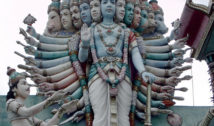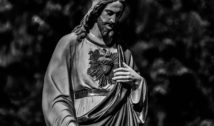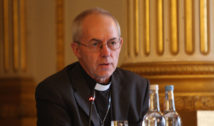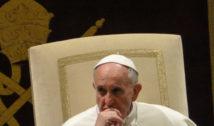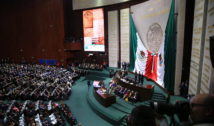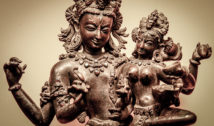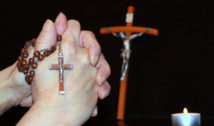Upcoming elections in Japan portend a resurgence of Shinto’s influence in the island nation
- By Alison Lesley --
- 10 Dec 2014 --
If the December “snap” elections lead in the expected direction, Prime Minister Shinzo Abe could shake the foundational operations of Japan and restore Shinto as the national religion–reducing the presence of pacifistic Buddhism.
The PM has called this special election two years early, purportedly in an attempt to increase the power of the Liberal Democratic Party from dominant to overwhelming. Detractors are suspicious this move is calculated in order to force a seismic religious and philosophical shift through the Diet, the Japanese parliament.
Indicators
Rumblings of this change surfaced after PM Abe visited the Yasukuni Shrine to the war dead in late 2013. China and South Korea immediately voiced strong concerns to Japanese ambassadors, and the United States took note, sending a message that in order to remain an ally, Japan must continue to pursue a path of peace with its neighbors.
Then in September of this year, the Prime Minister began to reorganize his cabinet, the inner circle that oversees the big decisions made by the government. Rather than attempting to maintain a balanced cabinet that represents the different political ideologies present in the country, a growing majority of the cabinet tends toward an ultra-conservative persuasion that devalues the Constitution set in place by America in 1946 and that denies individuality, personal religious freedom, and even the magnitude of Japan’s crimes against humanity during World War II. Through the influence of the Abe administration, talk of tradition, old religion, and cultural values such as honor and patriotism has moved from discontented grumblings to a place of open discussion on the national stage. Unfortunately, such talk also implies a rejection of equality of women, teacher unions, humane treatment for the mentally disabled, religious freedoms, and more.
Now the Prime Minister has called for an early election to shore up his support among the Japanese Diet, and it looks like his underlying goal is Constitutional reform. Among other reforms, he claims this would allow Japan to come to the aid of its allies when they are attacked; but a military force would also support a return to the imperial practices that have been forbidden since the Constitution was put into effect in 1946.
History of Shinto in Japan
Historically, Shinto has existed in Japan for more than 1,500 years as a religious form of ancestor worship. The Way of the Gods, as it was known, was essentially absorbed by Buddhism for a millennium, as a result of Japan’s imperial submission to the Chinese shogun era. However, in the 19th century, strong Shinto advocates came into power, and in 1882 it was declared the state religion of Japan once again. While State Shinto had more political and military emphases than in ages past, this change still influenced the direction and force of Japan’s militaristic efforts, as the heart of this practice of ancestor worship includes an insistence on the Japanese imperial family’s divine right of conquest.
But this return to prominence lasted less than a century. Shinto was outlawed in 1945 at the end of World War II, as a condition of Japan’s defeat and fueled by the emperor’s denial of imperial divinity. This brought to an end decades of military colonial aggression toward China and Korea. Any mention of it since has been seen by the neighboring nations as attempts to gloss over and glorify Japan’s war crimes from that era.
Significance for freedom of religion
While State Shinto has been defined as an expression of national identity rather than a religion, in effect it puts the government in the place of a religion and removes the opportunity for personal expression of religion. This led to the human rights violations that led to US intervention in the 1940’s. As Japan appears to make moves back to this mentality, outsiders do well to keep watch on the waves it could make in the global community.

